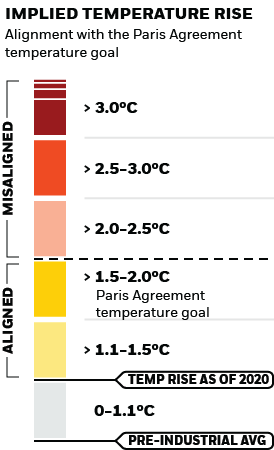IGRO
iShares High Growth ESG ETF
Overview
• who is seeking capital growth and/or income distribution
• using the product for a whole portfolio solution or less
• with a minimum investment timeframe of 5 years, and
• with a medium to high risk/return profile

Performance
Performance
Growth of Hypothetical $10,000
Distributions
| Ex-Date | Payment Date | CPU |
|---|
Tax Summary
-
Returns
| 1y | 3y | 5y | 10y | Incept. | |
|---|---|---|---|---|---|
| Total Return (%) | 30.36 | - | - | - | 14.47 |
| YTD | 1m | 3m | 6m | 1y | 3y | 5y | 10y | Incept. | |
|---|---|---|---|---|---|---|---|---|---|
| Total Return (%) | 17.14 | 1.54 | 2.73 | 8.64 | 30.36 | - | - | - | 34.72 |
| 2019 | 2020 | 2021 | 2022 | 2023 | |
|---|---|---|---|---|---|
| Total Return (%) | - | - | - | - | 21.02 |
Incept.: The date on which the first iShares ETF unit/share creation was processed.
The performance quoted represents past performance and does not guarantee future results.
Future-proof your portfolio

Key Facts
Key Facts
Portfolio Characteristics
Portfolio Characteristics
Sustainability Characteristics
Sustainability Characteristics
Sustainability Characteristics provide investors with specific non-traditional metrics. Alongside other metrics and information, these enable investors to evaluate funds on certain environmental, social and governance characteristics. Sustainability Characteristics do not provide an indication of current or future performance nor do they represent the potential risk and reward profile of a fund. They are provided for transparency and for information purposes only. Sustainability Characteristics should not be considered solely or in isolation, but instead are one type of information that investors may wish to consider when assessing a fund.
The metrics are not indicative of how or whether ESG factors will be integrated into a fund. Unless otherwise stated in fund documentation and included within a fund’s investment objective, the metrics do not change a fund’s investment objective or constrain the fund’s investable universe, and there is no indication that an ESG or Impact focused investment strategy or exclusionary screens will be adopted by a fund. For more information regarding a fund's investment strategy, please see the fund's prospectus.
Review the MSCI methodologies behind Sustainability Characteristics using the links below.
To be included in MSCI ESG Fund Ratings, 65% (or 50% for bond funds and money market funds) of the fund’s gross weight must come from securities with ESG coverage by MSCI ESG Research (certain cash positions and other asset types deemed not relevant for ESG analysis by MSCI are removed prior to calculating a fund’s gross weight; the absolute values of short positions are included but treated as uncovered), the fund’s holdings date must be less than one year old, and the fund must have at least ten securities.
Business Involvement
Business Involvement
Business Involvement metrics can help investors gain a more comprehensive view of specific activities in which a fund may be exposed through its investments.
Business Involvement metrics are not indicative of a fund’s investment objective, and, unless otherwise stated in fund documentation and included within a fund’s investment objective, do not change a fund’s investment objective or constrain the fund’s investable universe, and there is no indication that an ESG or Impact focused investment strategy or exclusionary screens will be adopted by a fund. For more information regarding a fund's investment strategy, please see the fund's prospectus.
Review the MSCI methodology behind the Business Involvement metrics, using links below.
Business Involvement metrics are calculated by BlackRock using data from MSCI ESG Research which provides a profile of each company’s specific business involvement. BlackRock leverages this data to provide a summed up view across holdings and translates it to a fund's market value exposure to the listed Business Involvement areas above.
Business Involvement metrics are designed only to identify companies where MSCI has conducted research and identified as having involvement in the covered activity. As a result, it is possible there is additional involvement in these covered activities where MSCI does not have coverage. This information should not be used to produce comprehensive lists of companies without involvement. Business Involvement metrics are only displayed if at least 1% of the fund’s gross weight includes securities covered by MSCI ESG Research.
Holdings
Holdings
| Ticker | Name | Sector | Asset Class | Market Value | Weight (%) | Notional Value | Shares | Par Value | CUSIP | ISIN | SEDOL | Price | Location | Exchange | Currency | Duration | YTM (%) | FX Rate | Maturity | Coupon (%) | Yield to Call (%) | Yield to Worst (%) | Real Duration | Real YTM (%) | Market Currency | Accrual Date | Effective Date |
|---|
| Ticker | Name | Sector | Asset Class | Market Value | Weight (%) | Location | Currency |
|---|
| Ticker | Name | Sector | Asset Class | Market Value | Weight (%) | Notional Value | Shares | Par Value | CUSIP | ISIN | SEDOL | Price | Location | Exchange | Currency | Duration | YTM (%) | FX Rate | Maturity | Coupon (%) | Mod. Duration | Yield to Call (%) | Yield to Worst (%) | Real Duration | Real YTM (%) | Market Currency | Accrual Date | Effective Date |
|---|
Exposure Breakdowns
Exposure Breakdowns
Total allocation percentages may not equal 100% due to rounding or omission of holdings of less than 1%.
Literature
Literature
Trading iShares
Trading iShares
iShares ETFs can be bought and sold via an exchange just like individual shares.

